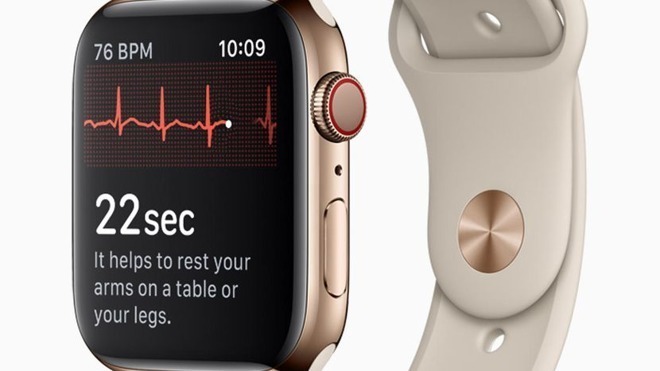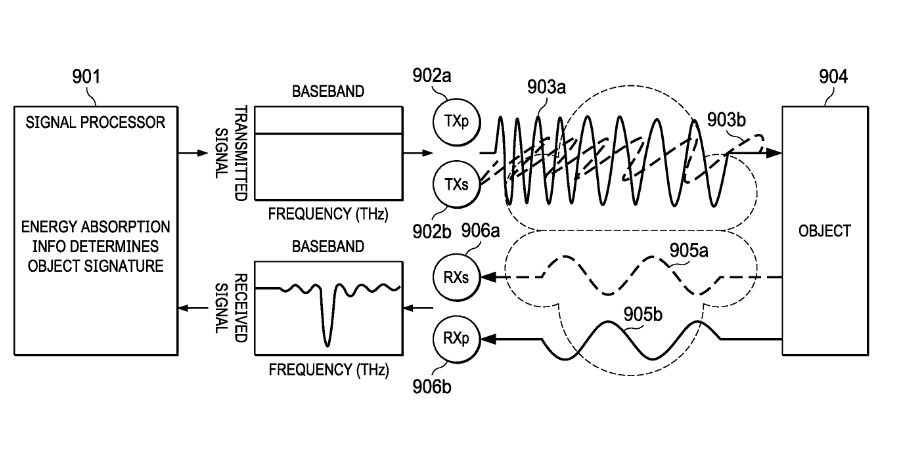A series of new patent applications backs up recent claims that Apple will introduce the ability for a future Apple Watch to monitor glucose using terahertz electromagnetic radiation without the need to draw blood.
Recent reports have claimed that the forthcoming "Apple Watch Series 7" will have the ability to monitor glucose to determine blood sugar levels — without the usual need to physically draw blood from a patient.
This is technology that very many medical companies have been pursuing, and it's one that Apple has previously researched over several years. Now, though, a series of four related new patent applications have been revealed, which together show Apple's latest proposal for such a system in Apple Watch.
None of the four mention the word glucose, nor the words "blood sugar." However, they all propose systems using absorption spectroscopy, which is what all non-invasive system proposals use for glucose monitoring.
"Terahertz Spectroscopy and Imaging in Dynamic Environments with Performance Enhancements Using Ambient Sensors," is the main new patent application, with the other three being related variations of it. All four are credited to chiefly the same team of inventors, and all are concerned with using an electromagnetic wave as part of the system.
Previous proposals have seen various implementations using light to detect "gas, health/quality of liquid or solid materials," but Apple argues here that there are limitations. As well as concerns about accuracy, there is also the issue of the power drain on small devices such as a watch.
"For example, integrating a gas sensor on an electronic device requires an aperture or opening to allow air to flow onto the gas sensor so that the gas can be detected," says Apple. "The aperture may degrade water resistivity of the device. Also, the size of the aperture may be constrained due to a tradeoff between form factor and gas detection capability."
Plus Apple needs this to detect more than gas, but it also hasn't got the space in the Apple Watch to add many different sensors. "Integrating multiple sensors on the consumer electronic device to detect gas, liquid and solid materials would increase the size and cost of the consumer electronic device," it says.
Finally, Apple says that many of today's sensors "have a high idle-time current consumption to maintain the properties of the sensor." For example, some have "heating elements that are used to maintain a certain temperature of the sensor at all times."
Previous proposals have been optical systems that pass light with known properties through a sample, such as a user's skin. When the light is detected again, it will have been altered by what it's passed through, with some wavelengths absorbed by the body.
Apple's new proposal appears to work in the same way, except that it uses terahertz electromagnetic radiation. In essence, the Apple Watch would be a radio spectroscopy device, that operates at a very short range.
"A transmitter of the electronic device emits an electromagnetic (EM) wave in a terahertz (THz) frequency band into a dynamic environment," says the patent application. "A receiver of the electronic device receives a reflected EM wave from the environment."
"A spectral response of the reflected EM wave is determined that includes absorption spectra that is indicative of the transmission medium in the environment," it continues. "The absorption spectra are compared with known absorption spectra of target transmission mediums."
Just as Apple repeatedly refers to an "electronic device" instead of stating Apple Watch, so it also broadens the scope of its proposal. While absorption spectroscopy is how non-invasive glucose monitoring would be done, Apple says that this proposal is also to do with overall health monitoring, such as detecting skin cancer and other skin disorders."
If Apple's proposal works, it obviously means that glucose monitoring could be done as a non-invasive procedure. But it also means that the Apple Watch could continuously monitor the levels and notify the wearer of significant changes.
This would not be as accurate as, for instance, a hospital's monitoring, but it would give the same kind of continuous information that has proved so useful with heart rate monitoring.
However, terahertz RF generation and accurate sensing is still a relatively new technology. It isn't clear where Apple is in the development of miniaturized components for it, if it has even begun actual physical work beyond research on the concept at all.
Terahertz imaging and sensing is not ionizing radiation, due to the low energies involved. Any impact to tissue is expected to be only as thermal effects — similar to existing radio frequency emissions in cellphones and the like. The technology has broader applications in medical imagery, can theoretically be used in data transmission, and in security imaging.
 William Gallagher
William Gallagher








-m.jpg)






 Marko Zivkovic
Marko Zivkovic
 Mike Wuerthele
Mike Wuerthele
 Christine McKee
Christine McKee
 Amber Neely
Amber Neely
 Sponsored Content
Sponsored Content
 Wesley Hilliard
Wesley Hilliard











21 Comments
incredible tech
Wow. Finally. Can’t wait.
Despite it not being ionizing, I wonder how long it would be before some spurious lawsuit or legislation claims it causes cancer, despite it not having the energy to cause those type of replicative errors.
That being said, as much as I love my series 3, I know it’s only a matter of time before advances in feature set convince me to upgrade.
When glucose monitoring arrives on the Apple Watch and it’s found to be effective, I intend to buy my first Apple Watch.
This doesn't have to be watch limited.
They could produce a larger dedicated device and it would still find a market. Especially for people who have problems while sleeping and older less mobile people where 'fashion' is not an issue.
Once calibrated, all the software/user would have to do is to detect an abnormal trend. Then the user could do a true glucose test to check on their state.
Baby steps at this point but baby steps are necessary.
At home we get through a ton of reactive strips a month. Non-invasive continuous glucose monitoring devices are being eagerly awaited by everyone with a medical need to control blood glucose levels.